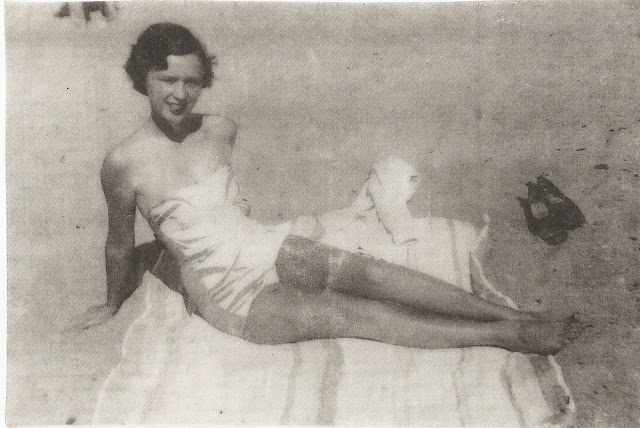 |
| June 2 2012 |
Berenice Abbott became a known photographer in 1923 when she was 25
years old. She is best know for her 1930s black- and- white photographs of New
York’s street life and architecture. Berenice Abbott had a long career defined
by an interesting photography style. She
has also done many other things.
When Berenice Abbott started her career in photography in 1923. She was an apprentice to her friend, Man Ray,
in his Paris studio. While living in Paris
and working with Man Ray, Berenice became aware of one of her biggest
influences, Eugene Atget. In 1926 Abbott opened her own studio where she
established herself in the photography world. In her early work she took
portraits of important writers and artists of the 20’s. After her mentor Atget
died she acquired is prints and negative and devoted all of her time to
promoting him and establishing his reputation as one of the foremost
photographic artist of his time. In 1929 she returned to New York and started
to photograph the rapidly evolving landscape of the city, a ten year project in
a documentary style later called “Changing New York”. Abbott is best known for
her work during this time, her photos of skyscrapers, and crowded streets are
an exciting combination of objectivity and impassioned realism that is essential
to the timeless quality of Abbott’s art. In the early 1932 she travelled
thought New England and along the East Coast taking photos of cities as they
were before the civil war. In the 30’s Abbott relocated her focus to the
Midwest and the south and then in the 1950’s she travelled US Route 1 from
Maine to Florida documenting it as she went. In the 60’s she moved to Maine.
After she moved to Maine she began to do scientific images for texts books.
Abbott also started the House of Photography in 1947 to allow her to sell some
of her photography related inventions. In 1991 she pasted away in Maine of old
age.
Berenice Abbot was a strong promoter of the straight photography
movement, which stressed the importance of no manipulation of the photograph in
both the subject matter and the developing processes. This style was developed
in the 20’s but had lost popularity for much of her career. She also did not
like the pictorialist, Alfred Stieglitz, who was very popular during most of
her career. Her style of straightforward photography helped her out with her change
to scientific photography. She is best known for her documentary style of
photography.
Throughout Berenice Abbott’s career she did many other things in
addition to her photography, including starting the house of Photography, and
promoting the career and work of Eugene Atget. In 1947 she started the House of
Photography but due to bad marketing, and the loss of two designers the company
went under. During the time that the house of photography was open it sold
inventions such as distortion easel, and the lighting pole, which is now known
as an “autopole”. Abbott’s promoted
Eugene Atget, which delayed her career, but helped gain him international
recognition for his work.
Berenice Abbott had a career that lasted over 3 decades during which
time she published a book called “Changing New York”. She has a documentary black and white
photography style and she does not believe in making modifications to her
photographs. Abbott also promoted the career of Eugene Atget, and started the
house of photography. Her creations are important and memorable images that
will last forever.




















